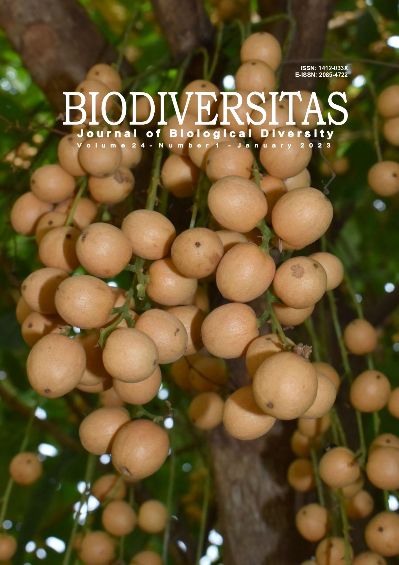Composition and diversity patterns of weeds in herbicide tolerant maize fields and margins in the Eastern Cape, South Africa
##plugins.themes.bootstrap3.article.main##
Abstract
Abstract. Kwinda M, Siebert SJ, Coller HV, Masehela TS. 2023. Composition and diversity patterns of weeds in herbicide tolerant maize fields and margins in the Eastern Cape, South Africa. Biodiversitas 24: 399-414. Weeds are considered undesirable plants that grow where they are not wanted, as they often outcompete crops and other beneficial species. This study aimed to compare species composition and diversity of weedy plant communities in fields planted with herbicide tolerant maize and associated field margins in the Eastern Cape Province, South Africa. A total of 88 weed species, representing 31 families were recorded from 244 plots for maize fields and field margins combined. The maize fields and margins across the four sites shared 53% of species. Non-metric Multidimensional Scaling grouped maize fields and field margins separately based on weed species composition. Moreover, maize fields and margins differed significantly in terms of Simpson (p=0.044) and Shannon indices (p=0.003), with diversity being higher in the fields. This study confirms that maize fields have a dissimilar composition of weedy species and dissimilar diversity, which differs from those of field margins. This result enables farmers to know whether current herbicide use is sufficient for targeted weed control. The findings and knowledge will benefit maize farmers and future researchers working on weeds in Sub-Saharan Africa when it comes to the development, implementation, and prioritization of various herbicide-based weed management protocols to ensure maximum crop productivity.

